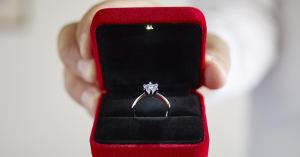Many people think of sushi as a healthy, tasty treat, but a class of biology students recently proved that that is not always the case.
Biology professor Dr. Jen McDonald first laid out her class’s work in a Twitter thread back in April. It has picked up a lot of steam online as users are so horrified by what she found that they have to share it. It has since moved on into other outlets, where people can’t help but ask about what they found.
Videos by PopCulture.com
Dr. McDonald sent her students — all seniors in college studying biology — out to various sushi restaurants to pick up samples for their lab. With Dr. McDonald’s guidance, the students extracted DNA from the sushi in order to test whether the contents really matched the description on the menu. They found much more than miss-labelled fish species, however, as Twitter users soon discovered.
Scroll through for a look at Dr. McDonald and her class’ findings.
Fanshawe College

Dr. McDonald teaches at Fanshawe College in London, Ontario up in Canada. She originally got the idea for her sushi experiment from Twitter, she told Bored Panda, so it makes sense that the experiment went viral there.
“I was looking for a way to ‘spice up’ my Molecular Biology labs with a practical exercise that integrated the theory portion of the lab with something that was really hands-on, relevant to today’s biology world, and relevant to what my students may one day be doing as Laboratory Technicians when they graduate,” she explained.
To do it, Dr. McDonald used kits from a company named Bio-Rad that she first tested herself.
Fish Fraud

Dr. McDonald expected her students to find some examples of “fish fraud,” which is when someone along the supply chain miss-labels one type of fish meat as another. Obviously, this can be extremely dangerous for those with food allergies, and can have ripple effects down the line depending on how that fish is used.
“Fish mislabelling in the seafood and fish industry (even the aquarium industry!) is well-documented and something that many governments are attempting to tackle with stricter rules and regulations, more enforcement, and higher fines,” Dr. McDonald said.
“I expected to find results that were in line with what was previously published: about 50 percent of fish will not be labeled correctly, with some species like red snapper and white tuna being more likely to be mislabelled than others.”
DNA Sequencing

The method used by Dr. McDonald and her students is called DNA sequencing. She compared it to “shopping,” with the DNA data serving as an organism’s “barcode.”
“A gene sequencer has the ability to read all of the letters of the genetic code between two primers, that act like target probes,” she said. “It’s really nice because it can work on a very small piece of tissue, instead of relying on identification based on the entire, intact, organism.”
This method has room for error, but not enough to account for the results Dr. McDonald and her students found.
DNA Results

The molecular biology class brought in their sushi samples from all over town and noted what they had been labeled as. As Dr. McDonald revealed in her Twitter thread, only two out of their samples turned out to be what they were sold as.
A few of their samples turned out to be tilapia, a bottom-feeding fish that does not agree with everyone. This included red snapper and red tuna, both more expensive than a tilapia filet.
DNA Results (cont).

There was also a sample sold as Atlantic salmon that was somehow rainbow trout — a completely different species that lives in freshwater. Two samples were marked as rainbow trout, but one turned out to be coho salmon.
Some mixups were relatively harmless. A box labeled Pacific Cod turned out to contain Atlantic Cod — “CRINGEEEE!!!!!” joked Dr. McDonald.
One sample even turned out to be a more expensive fish than the label said — yellowfin tuna sold as albacore tuna. However, another was potentially dangerous.
“Evalyne sequenced the other sample of ‘white tuna,’” Dr. McDonald wrote. “That was the one that I brought in, that I theoretically would have eaten if I actually liked and ate ‘white tuna’ (I think it’s gross). It was escolar. THIS IS DANGEROUS. Can cause extreme gastrointestinal distress.”
‘Unknown Bases’

Dr. McDonald saved the most horrifying result for last, however. She described one that “made my skin crawl,” a sample labeled as salmon. The sequence was successful, though it needed a bit of clean-up, as the sequencer listed “a bunch of ‘unknown bases,’ she said.
“This salmon was not from a restaurant, but was instead purchased from the seafood department of a local grocery store. Again, to remain nameless. This was purchased from a counter, someone reaches in and grabs the fish, puts it in a bag, sticks a sticker on it, pays the pound.”
“Of a gene approximately 650 base pairs long, I was hoping to get a workable sequence of at least 500 base pairs, ” she went on. “This one only had 200 clean pairs before I go through the sequence generated. So short compared to expected ‘working material.’”
“Ready?” she asked.
Body Louse

“Body louse.”
The doctor’s salmon sample was not only the wrong species — it wasn’t even a fish. The DNA sequencer identified the tissue sample as that of a common body louse, to Dr. McDonald’s and her students’ horror.
“I think I might vomit in my mouth a little,” she wrote. “I hope this is a mistake. HOPE TO ANY GOD FROM ANY RELIGION that this is a mistake. I hope that this somehow becomes a fish sequence when I clean it up a bit. BUT BODY LOUSE.”
In a later tweet, she emphasized that this was apparently good meat sold from a reputable market, and not just picked up on the street. It was expensive, she noted, and it is not easy to override the DNA and fool the sequencer that completely.
Final Tally

All told, Dr. McDonald’s class of 16 students managed to get 13 workable samples from their local restaurants and grocery stores. From that, they got 9 “decent sequences” for lab work. Out of those 9 samples, only 2 had been labeled correctly at the place where they were sold.
“So if you ‘are what you eat’ and you like seafood? You have no idea what you are because nothing is labelled properly,” Dr. McDonald concluded. “If you want to know what you’re eating? Make sure it’s from a certified sustainable fishery. They know what they’re fishing, and know what they’re doing.”
Health Risks
It is worth noting the health risks of this so-called “fish fraud.” As Dr. McDonald pointed out, shellfish is an extremely common food allergy. That and others could put any unwary fish eaters at risk when their meat is miss-labelled.
“Many people are allergic to shellfish or some other kind of fish, and will avoid these when eating out at a restaurant or buying food at a grocery store,” she said. “If the fish that they’re being served (or any food, really!) is not what the label claims it is, they could become very sick or even die.”
“Same with ‘fillers’ added to products,” she went on. “Sometimes gluten is added to things like imitation crab to give it a better texture. If this is not declared on the menu or label and you’re allergic to gluten? This could be a big disaster for you! There are also cultural points to consider as well: some people from certain cultures or religions don’t eat certain foods. They may be inadvertently eating something they shouldn’t be, if that product is not declared on the label or is misidentified in their meal.”
In addition to these considerations, the Japanese government actually banned escolar in the 1970s, citing research showing that the fish is toxic.
“Once we got the results, I don’t think anyone was overly surprised,” Dr. McDonald said. “Disappointed, sure! It also helped make a few things make more sense, too. Many students complain that after having sushi sometimes they feel very ill, while sometimes they feel fine after having essentially the same meal. Most pass it off as food poisoning from E. coli or Salmonella, but almost all of them realized it may actually be due to escolar being served to them as ‘white tuna.’”








